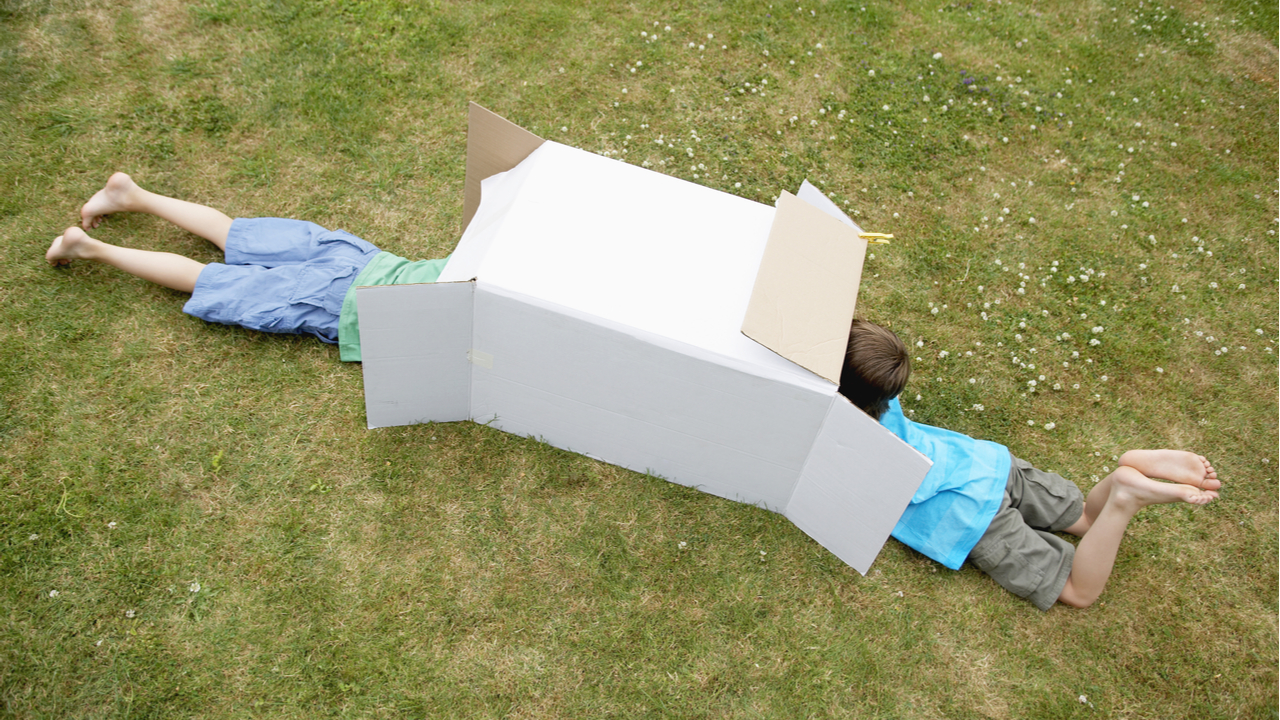
There’s a reason why kids spend time playing with the wrappers and boxes more than the actual presents that came inside (and it isn’t just to be ungrateful assholes). It’s because the presents are fun, but there’s only so much you can do with them. The box, however, can become a fort! A restaurant table! A sports car! A dollhouse! And that’s just if you leave it intact — give them a pair of scissors and some tape or string, and they’ll have more fun with it than they’ll ever have with the expensive toy.
It’s the lesson all parents inevitably learn when we fork over an arm and a leg for the “must-have” plaything, only to have our kids ignore it in favor of the packaging. But it serves as an important reminder: Kids will jump at the chance to be creative, to be the masters of their own playtime. It’s why parents have been stepping on Legos since the 1940s.
Creativity is a free-for-all commodity, but we seem to forget that when we grow up. As adults, we tend to think of a select few as “creatives” — like there are two distinct groups, those who create and those who are consumers of those creations. The ones who make the art, and the rest of us who look at it.
But if you think about it, all kids are creative, not just a few. When given the chance, they all enjoy making things and coming up with ideas and telling elaborate stories. And therein lies the beauty of what we call “loose parts.” Loose parts are literally anything, even things that aren’t necessarily meant as playthings. They’re the junk we find in the wash if we don’t check the kids’ pockets first, like pinecones and rubber bands. Empty cartons and smooth stones, paper towel rolls and buttons, Popsicle sticks and dry pasta, they can all be manipulated, combined, and adapted into whatever kids’ inspired little hearts desire.
They are invitations to explore and learn at their own pace, in their own way.
The loose parts theory was first proposed by architect Simon Nicholson in the early 1970s. He theorized that the more variables there are in any environment, the higher the level of creativity and ingenuity, and he used the beach as a prime example. Sand, water, seashells, pebbles, clumps of seaweed or moss, there are plenty of variables to choose from. Throw in a sand pail and a plastic shovel — two more “loose parts” — and kids will be entertained for hours.
And it’s true.
When you give a kid a bunch of random objects and nobody dictates what they’re supposed to do with them, something awesome happens: They figure it out themselves. Following directions is one thing, but when there are no directions, imagination takes over. Ingenuity abounds. And in the process, they’re developing a wealth of valuable skills. Problem-solving, concentration, fine and gross motor development, mathematical and scientific thinking, they all come into play while kids are, well, playing. When you give them free rein to decide how to use the elements in front of them, you’re empowering their creativity.
The best thing about loose parts is that they are cheap and easy. You can find them indoors or outdoors, as near as your pantry or recycle bin. And when you’re looking for loose parts, don’t stop within the boundaries of your own yard. Check hardware stores and home construction sites, where you can find inexpensive (or free) carpet scraps or odd wood blocks or varying lengths of PVC pipe. Peruse rummage sales and craft stores. Ask around. Obviously if your children are under 3, or prone to putting things in their mouths, you’ll need to gather bigger items that don’t pose a choking hazard — but there’s no shortage of those. No matter how old your kids are, seeking out cool stuff to play with can become a hobby, something you can do together.
Right now, they may be little people tinkering around with simple, unassuming playthings, and it seems inconsequential, just a regular part of childhood. But through those bits and pieces, an important foundation is being laid. These kids are going to grow up to become the people who design and construct architecture and machinery and technology. Those sponges and paper clips are going to turn into actual mechanisms that combine to engineer amazing things.
The inventors of the future are in your living room. Toss them some loose parts and watch the magic happen.











RSS